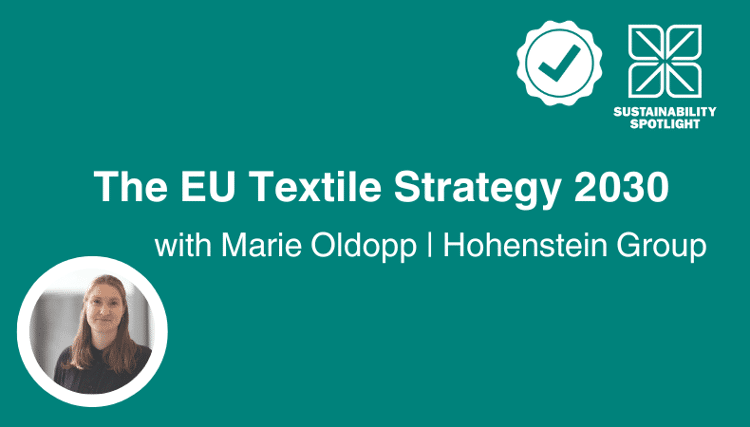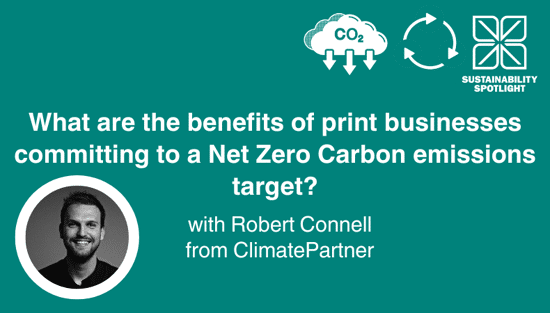The EU Textile Strategy 2030

FESPA’s Online Marketing Manager, Kelley-Ann Young Kong speaks to Marie Oldopp from Hohenstein about the EU Textile Strategy 2030, what it is and what it stands for as well as discussing which OEKO TEX standards are the most important for printers involved in textiles.
Please visit Sustainability Spotlight to discover more online content where we speak to industry experts about Sustainability where you can discover business opportunities to reduce, reuse and recycle materials and improve your knowledge.
For more information about Hohenstein Group visit here: https://www.hohenstein.com/en/
OEKO TEX https://www.hohenstein.com/en/trust/oeko-tex
Topics
Recent news

What are the benefits of print businesses committing to a Net Zero Carbon emissions target?
We speak to Robert Connell, Senior Commercial Sustainability Manager at ClimatePartner who who offer solutions along the net zero cycle to support business’s effort in corporate climate action. In this discussion we discuss the importance and the process and benefits of businesses committing to a Net Zero Carbon emissions target.

6 Sustainable Printing Practices Changing the Game in Textile and Apparel Decoration
The textile industry is shifting towards sustainability. Innovations like waterless and digital printing, eco-friendly inks, and recycled materials are reducing waste. AI and automation optimise production, while circular models promote reuse. Consumer demand for transparency drives this change, making sustainable practices essential for future-focused brands.

Sustainability in Production Print: Advancing Practices in Wide Format, Textiles, and Software
As sustainability continues to take centerstage across industries, the production print sector is making massive strides in integrating eco-conscious practices. From wide format to textile applications, with the growing reliance on advanced production software, the space is evolving to meet environmental goals as well as consumer demand for sustainable products.

Why must the print industry recognise software and material innovation
Laurel Brunner argues that the printing industry must recognise the value of both software and material innovation, and be willing to pay for it. Software, though intangible, drives efficiency and reduces carbon footprints. While materials science currently dominates, R&D costs are inherent in all advancements. Paying a premium ensures continued progress, benefiting the industry's evolution and sustainability.